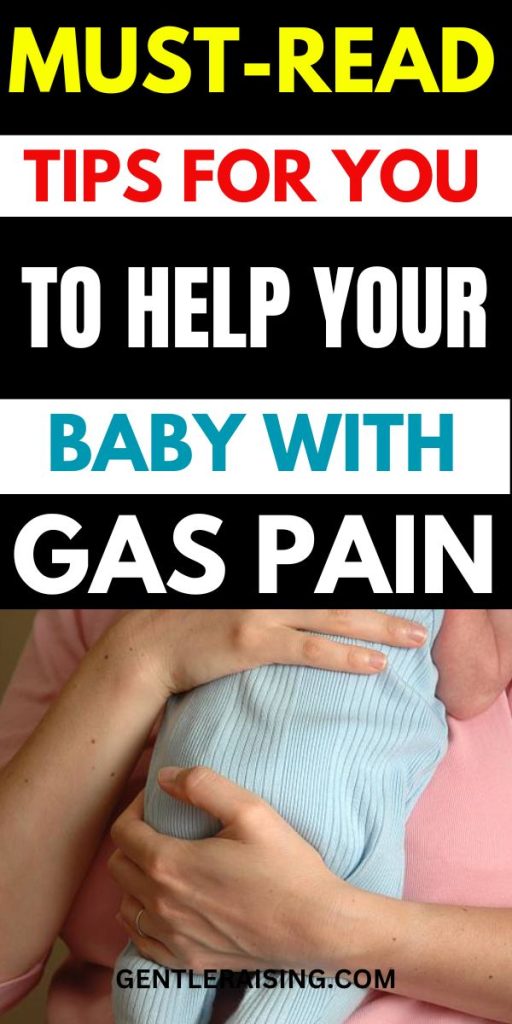How to Relieve Infant Gas Pain: What Every Exhausted Parent Needs to Know
Picture this: it’s 2:47 a.m. You’re swaying in the hallway, half-asleep, holding your baby like a bomb that might detonate if you breathe too hard. She grunts. Her face turns red.
Her tiny legs draw up to her chest. You swear she’s trying to do crunches.
Gas. Again.
You whisper, “Please just fart.”
If this sounds familiar, you’re not alone. Infant gas pain is something almost every parent wrestles with, often while Googling in the dark. But here’s the thing: while gas is normal, painful gas doesn’t have to be.
Let’s break this down, casually, honestly, and with just enough science to help you stop second-guessing yourself.
What Exactly Is Infant Gas Pain?
Before we jump into what to do, let’s talk about what’s going on in that tiny tummy.
Newborns have immature digestive systems, think of them as under-construction highways. Food (whether breast milk or formula) moves through their GI tract, where bacteria do their thing, breaking stuff down. That process releases gas. Add in a bunch of swallowed air (crying, feeding, breathing too fast), and you’ve got a little balloon with arms.
But not all gas is created equal.
Some babies pass it without fuss. Others seem to battle it like it’s a tiny war in their bellies, wincing, crying, squirming, refusing to sleep. That’s when it crosses into gas pain.
And honestly? It’s hard to watch.
Is It Just Gas? Spotting the (Sometimes Sneaky) Signs
Babies don’t come with dashboards or warning lights. So gas pain doesn’t always look how you’d expect.
Here’s what might clue you in:
- Arching back during or after feeds
- Crying while passing gas or pooping
- Grimacing, clenching fists
- Pulling legs up to the chest (like a tiny Pilates instructor)
- Difficulty sleeping, especially lying flat
- Sudden fussiness, especially after eating
But wait, could it be colic? Reflux? Teething?
Yep, that’s where things get muddy. Gas pain can mimic or mix with other issues. That’s why tracking when the fussiness happens (after feeds? during certain times of day?) can help you untangle the chaos.
Red flags to watch out for:
- Projectile vomiting
- Bloated, hard belly that doesn’t soften
- Bloody stools
- Refusing feeds completely
In those cases, please call your paediatrician.
What’s Causing All That Gas?
Honestly, sometimes it’s just the way the wind blows (well, your baby’s wind).
But often, it’s tied to one or more of these:
1. Swallowing air
Whether your baby’s guzzling milk too fast, crying a lot, or using a bottle with too-fast flow, air’s going down, and it’s gotta come out. Either end.
2. Immature digestion
Their gut is still figuring out what’s what. It’s learning. Growing. That means sometimes digestion’s clumsy, like a toddler trying to dance in roller skates.
3. Mom’s diet (if breastfeeding)
Yes, what you eat can affect your baby’s tummy, but not always in obvious ways. Broccoli, beans, onions, dairy, spicy foods or none of the above. Every baby is different.
4. Formula or feeding imbalances
Some formulas may not sit right, and with breastfeeding, getting more foremilk than hindmilk can lead to gassy bubbles forming.
Let’s move from theory to action.
So What Can You Do About It?
Here’s where it gets real. You’re tired. You don’t want a list of 30 fancy gadgets. You want simple, soothing solutions that work in real life.
Baby Belly Massage (No Spa Training Required)
Try this after a warm bath or during a diaper change:
- Start with circular motions clockwise around the belly button
- Walk your fingers like tiny legs across the lower abdomen
- Do the “I Love U” stroke (YouTube it, trust me)
- Use baby-safe oil or just your warm hands
Massage doesn’t just move gas, it calms the nervous system too. Think of it as a spa day for both of you.
Bicycle Legs & Tummy Time
It sounds almost too simple, but gentle leg pedalling and tummy time help that gas move.
- Gently push knees toward belly and release
- Let the baby lie on your lap face down and rub their back
- Or try babywearing upright in a wrap or carrier, movement + vertical position = gas escape route
Burp Like a Boss
Yes, even if the baby doesn’t seem to need it.
- Try mid-feed and after
- Experiment: over-the-shoulder, sitting upright on your lap, or tummy-down across your arm
- Pat or rub, some babies prefer one over the other.
If one method isn’t working, switch it up. Baby burps are not a one-size-fits-all kind of thing.
Warm Compress (Oldie but Goldie)
A warm (not hot!) towel on the baby’s belly can work wonders. It soothes the abdominal muscles and encourages gas movement.
Bonus: it can help you stay calm, too.
Feeding Smarter = Less Gas Later
A few tweaks at feeding time can save you hours of crying later.
Breastfeeding?
- Try a laid-back or football hold to help the baby latch deeper (less air)
- Make sure the baby finishes one breast before switching
- If you have a strong letdown, expressing a bit before baby latches may help
Bottle-feeding?
- Use slow-flow nipples
- Keep the bottle angled to reduce air
- Try paced bottle feeding (mimics breastfeeding rhythm)
Sometimes a simple nipple switch changes everything.
What About Remedies? (And Which Ones Are Worth Trying?)
You’ve seen the ads. But do they work?
Gripe Water
Herbal remedy (usually with fennel or ginger). Some swear by it. Some see no change. Always check ingredients, and don’t overuse.
Simethicone Drops
Breaks down gas bubbles. Safe in small doses. Works for some, meh for others.
Infant Probiotics
More long-term than immediate relief. If the baby was delivered via C-section or had antibiotics, it might be worth exploring. Ask your paediatrician.
Remember: no remedy replaces feeding technique or movement. But sometimes, they can be that little “extra.”
ThThe 22MMM Struggle: Gas + Sleep Don’t Mix
You’re tired. Baby’s tired. But gas wins.
Try these at night:
- Keep baby upright 20–30 minutes after feeds
- Swaddle loosely (so legs can still bend)
- Use white noise creates a calming womb-like soundscape
- Rocking chairs or a gentle bounce on a yoga ball? Worth a shot.
Sometimes all they need is time and closeness. Even if it’s frustrating now, this phase does pass.
When to Call for Backup
It’s never “just gas” if your gut says otherwise.
If your baby:
- Screams inconsolably for hours daily
- Seems to be losing weight or feeding poorly
- Has a consistently hard, distended belly
- Throws up forcefully or has blood in stool
Please talk to your paediatrician if it turns out to be gas; they’ll help rule out something more serious.
Final Thoughts: You’re Not Messing This Up
If you’re reading this a3at 3MMAM while pacing the hallway in your socks, just know, you’re doing it. You’re showing up. You’re trying. That matters.
Gas pain is rough. It’s hard to watch your baby uncomfortable when all you want is to make it better. But babies are resilient. And so are you.
Keep watching for patterns, trying what feels right, and trusting your gut. Relief might come in a burp, a fart, or a ticontentedtent sigh.
And when it does? You’ll feel like a superhero.
Even if you still haven’t brushed your teeth.
Liked this post? Share it with another parent in the trenches.
Want more gentle tips and real-talk parenting guides? Follow GentleRaising on Pinterest and never feel alone in this journey.

